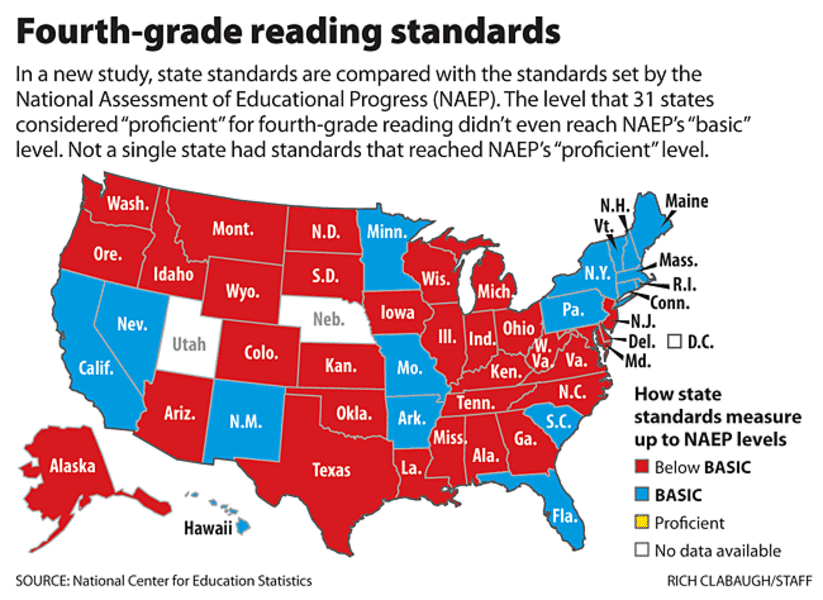Student 'proficiency': What is your state's definition?
How advanced a student is may have more to do with where he lives than how much he knows.
Under the No Child Left Behind Act, states are under pressure to bring more students up to "proficiency" every year. But each state can define what proficiency means differently.
A new report shows just how widely these definitions vary.
"A proficient reader in State A may be very different from a proficient reader in State B – even though those students may have the same academic skill," says Peggy Carr, associate commissioner for assessment at the National Center for Education Statistics (NCES), which released the study Thursday.
The study aims to provide useful comparisons among the state standards. To do so, it put states' data on test scores into the system used by the National Assessment of Educational Progress (NAEP) – a common national test that is often referred to as the "Nation's Report Card."
What this shows is that states are all over the map when it comes to what they expect their students to learn.
Particularly lax are fourth-grade reading standards: The level considered proficient in 31 states didn't even reach the "basic" level on NAEP. Not a single state had standards that reached NAEP's "proficient" level.
Mississippi, the state with the least-rigorous standards, considered students to be proficient at a NAEP score of 163, while Massachusetts, at the top, in effect set the bar at 232. That's a range of 69 points. (NAEP itself put the proficiency level at 238.)
But the biggest range appears in eighth-grade math scores, where the study showed a 78-point difference between what's considered proficient. The most rigorous state was South Carolina and the least was Tennessee.
While it's hard to calculate exactly how much learning is represented in these differences, NAEP tests often show that students improve their scores by about 10 points a year.
Here's another way of looking at it. In fourth-grade math, the achievement gap between black and white students is 32 points. "Seventy points is double the distance between the highest- and lowest-scoring state on the NAEP scale," Dr. Carr notes in a comparison, to give a sense of just how wide a gap of knowledge it represents.
Moreover, some states that have recently changed their standards are making them less rigorous, particularly at the eighth-grade level, according to the study. Three states – Maine, Oklahoma, and Wyoming – decreased their standards between 2005 and 2007 in both reading and math and at both the fourth- and eighth-grade levels.
These differences in standards don't necessarily mean that students in high-standard states are performing any better. But they do make it hard to compare how students are doing.
Take Arizona and Minnesota. They announced identical results for 2007 reading achievement, saying that 66 percent of their fourth-graders were performing at grade level. But according to NAEP scores, Minnesota students are actually doing better than those in Arizona (37 percent reached proficiency in Minnesota versus 24 percent in Arizona).
"Most lay people and parents have the understanding that proficiency means you're on grade level, but that's not true," says Amber Winkler, research director at the Thomas B. Fordham Institute in Washington. Fordham has advocated that common – and more rigorous – standards should be adopted.
"This is a black box to most people," Ms. Winkler adds. "The concept of proficiency is bandied about, ... but there are a lot of ways and mechanisms states can use to make it appear they're performing better than they are."
Those disparities are a big reason why Winkler and others are pushing for the Common Core Standards – currently in draft form – to be completed and adopted by states across America.
"I think people really get it now – that this is unacceptable to have these differences among states," says Winkler.
-----
Recently released NAEP results
Fourth-graders showed no improvement in math in 2009 – the first time since 1990 that no gains were made. Click here to read more.
-----
Follow us on Twitter.





